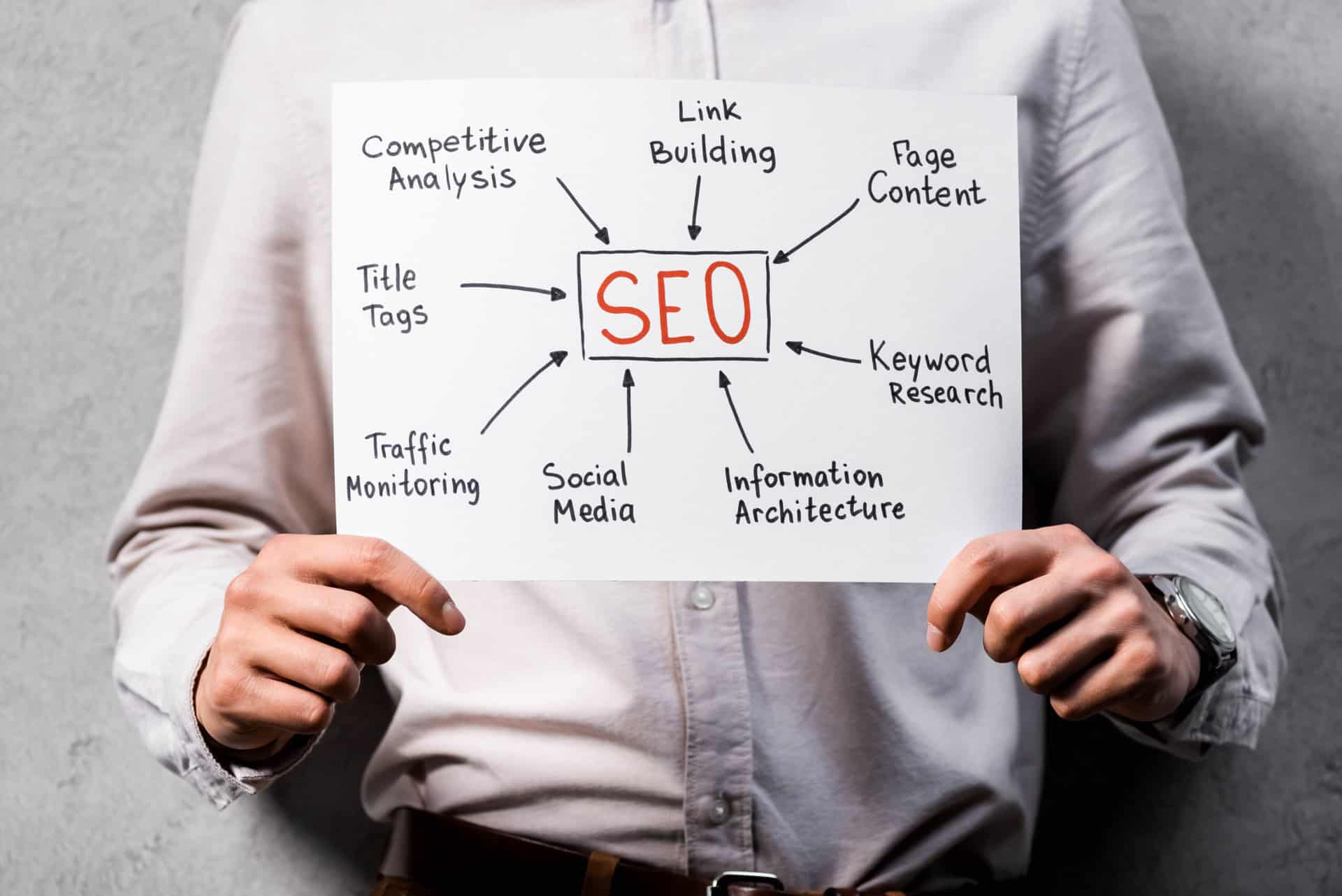
Understanding Onsite Vs. Offsite SEO

Did you know that more than 90% of websites on the internet don’t receive any organic search traffic from Google? This is because less than 1% of searchers look beyond the first page of results. Statistics like these show why search engine optimization is so important for any business. Without implementing a strong SEO plan, business owners cannot rise to the top of Google’s search engine results pages. A strong strategy focuses on onsite vs offsite SEO and implements the best practices for both.
Onsite vs Offsite SEO
In a nutshell, onsite SEO is everything you do to your website to help it climb Google’s search engine rankings. Offsite SEO includes most of the things you do outside of your website to improve SEO (while advertising is a category of its own). To ensure your website reaches the height of its potential, you must have strategies for creating, maintaining, and modifying onsite and offsite SEO.
A Closer Look at Onsite SEO

Onsite SEO is everything you do to optimize your website so it performs its best in Google’s search rankings. One of the most important aspects of onsite SEO is high-quality, well-written, and original content. Whether you’re creating informational web pages, blog posts, product descriptions, or articles, your content must provide value to the reader.
Many business owners hire SEO writers to ensure their content achieves its goals. Wherever you get your content from, though, there are many factors to consider to improve SEO performance including where to use your keywords for SEO.
Title and Meta Description
Include your main keyword in your website’s title and meta description to ensure the web crawlers know what your site is about right away. Pay attention to length. Google prefers indexing titles that are as close to 60 characters as possible and descriptions that are no longer than 150 words.
Headings and Subheadings
Using H1, H2, and H3 headings and subheadings on each page is essential for helping Google understand the deeper meaning of the page it’s crawling. Each page should have only one H1 title, which should include the main keyword. Use H2 and H3 subheadings to break up content in your blog posts or on your informational pages. Add keywords to them to increase the number of searches your page shows up in.
Internal Links
Add internal links to every page on your website to make it easier for visitors and web crawlers to navigate. Each page should include one to two links for every 200-250 words, but should not go beyond 150 internal links, including navigation links. Ensure the links you include are relevant, such as directing to previous blog posts written on the same topic.
Images
Include high-quality images on your pages and use alt text to increase accessibility and improve your Google rankings. The alt text should describe the image and use one of your keywords when possible.
Let Us Help With Onsite and Offsite SEO!
At BKA Content we understand the importance of both onsite and offsite SEO. Using a variety of organic marketing strategies, we can drive traffic to your site.
A Closer Look at Offsite SEO
Offsite SEO describes everything you do on the internet outside of your website that helps you increase your company’s ranks in Google’s search results. Ultimately, the aim of your non-website-specific online activities should be to build organic links to and from your website.
Guest Posts

Guest posting is an excellent way to naturally build links to and from your website. If you guest post on another company’s blog, you can link back to relevant content on your own website, such as other blogs you’ve previously written. You can also build your external links by allowing other business owners to guest post on your own blog. Ensure the content matches your brand’s voice and is high-quality, though, as poor content can set you back.
Press Releases
If you run the type of business that finds itself in the news, write a press release as a way of building links back to your website. When you release information about new products, services, or features, the sites that pick up on your press release and post about it will link back to your website.
Social Media Presence
Social media is vital for any business. Create profiles on LinkedIn, Facebook, Instagram, and TikTok. Use them to post information about your products and services. Remember, social media platforms are about what’s trending. Find ways to use memes, TikTok trends, or other relevant pop culture mentions in your content to increase engagement. Remember, the more active you are, the more successful your social media presence will be.
Tips To Implement Onsite and Offsite SEO

Understanding the difference between onsite and offsite SEO is only part of the job. Implementing, analyzing, and modifying the SEO strategies you learned about is vital.
Improve Technical SEO
Technical SEO falls under “onsite” under the onsite SEO vs offsite SEO umbrella. Although it goes on behind the scenes, it is just as important as more visible tactics. Technical SEO involves practices that create a better user experience. It includes things such as improving site speed, obtaining SSL certificates, and ensuring your page is indexable and your code is clean.
Research Keywords
Chances are you already have basic keywords in mind, but you could be missing out on opportunities if you don’t research what other terms people use to find businesses like yours. Decide which one will be the main keyword you use in your title, H1 heading, alt tags, and meta information. Use other keywords you found throughout your content body.
Focus on Your Blog
Research shows that business websites with blogs receive 55% more visitors and increase their indexed pages by more than 400%. Make a blog that provides information about your industry, such as news articles or how-to pieces. Focus on creating relevant, up-to-date pieces that bring new information to your readers. Remember to link to previous blogs or high-quality external sources. Periodically, read through old blogs and update them as needed to further increase crawlability.
Stay Involved on Social Media
It isn’t enough to create social media profiles and leave them be. The more engaged you are, the more engaged your followers will be and the more likely they are to become customers. Post regularly about new products or services, updates in your industry, and what goes on behind the scenes in your business. Respond to comments and DMs to stay relevant.
We Help You Balance Onsite vs Offsite SEO
Whether it’s onsite or offsite SEO you want to improve, know that both are vital parts of a strong SEO plan. Let BKA Content help you achieve your SEO goals. Contact us to learn more about our custom SEO content services!
- How to Do an SEO Content Audit on Your Website (A Step-by-Step Guide) - December 17, 2025
- How to Get Content to Rank in AI Search: 5 Proven Strategies - December 11, 2025
- Local SEO: How To Create Location-Specific Web Pages That Rank - November 17, 2025


